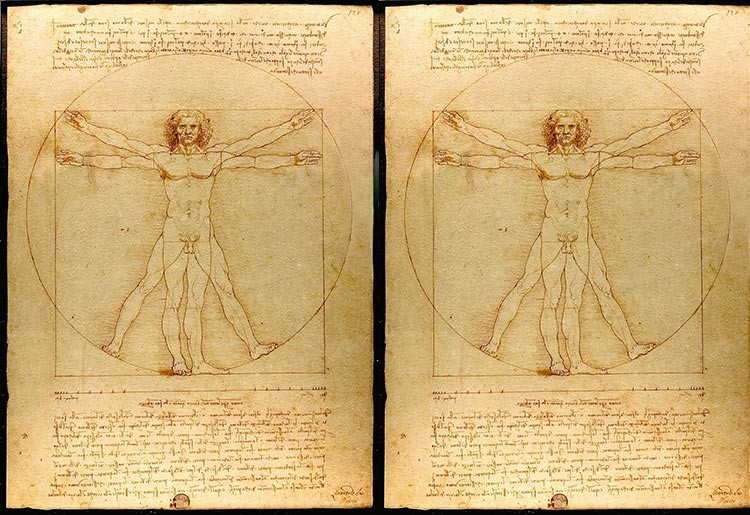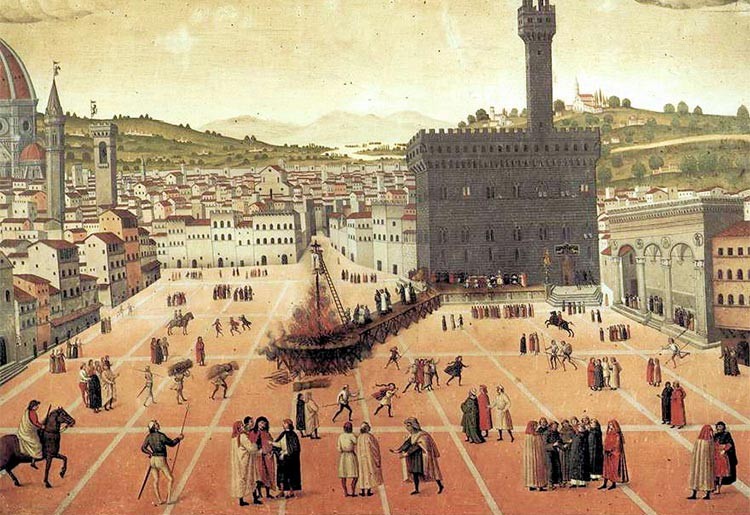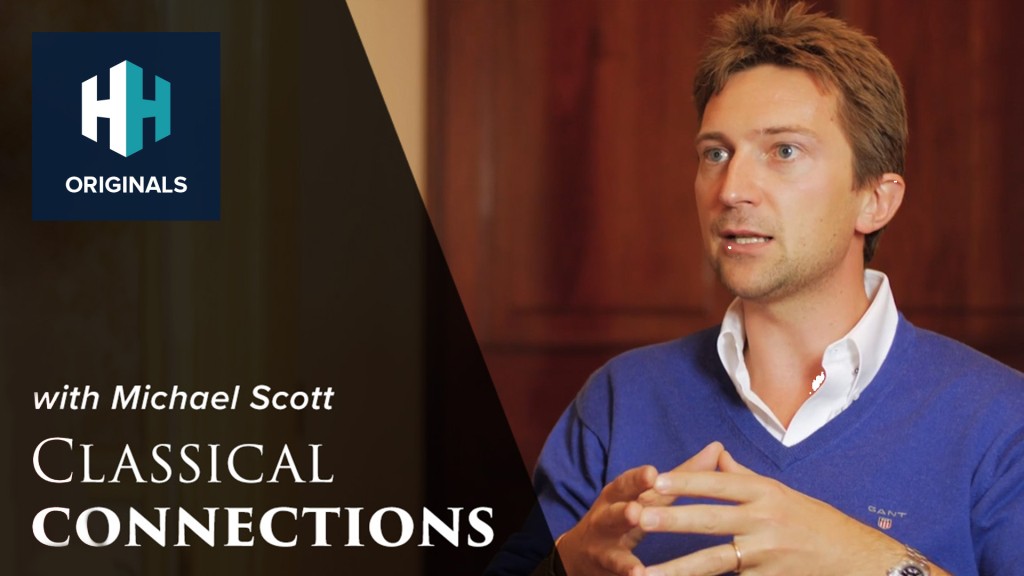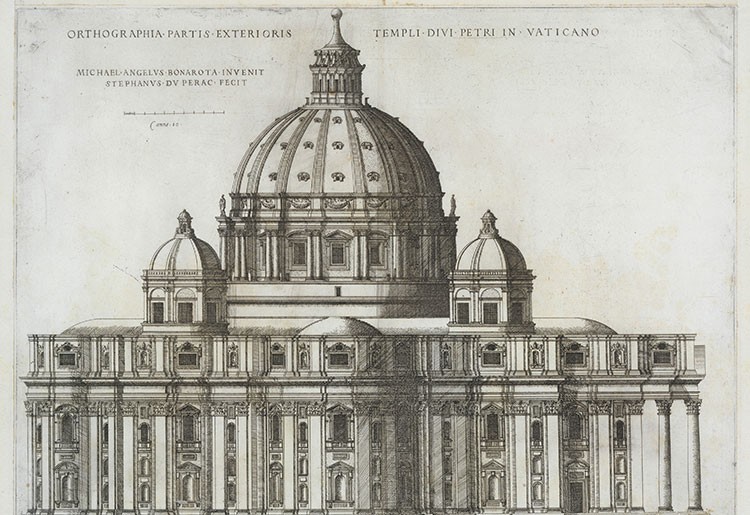The Renaissance began in Italy due to a confluence of factors, including its rich classical heritage, economic prosperity, and political landscape. At WHY.EDU.VN, we delve into these reasons and offer in-depth insights into why Italy became the cradle of this transformative era, including its impact on art, culture, and society. Discover the key elements that fostered this rebirth of knowledge and creativity, from the rediscovery of ancient texts to the patronage of wealthy families.
1. Italy’s Central Role in the Roman Empire
One of the primary drivers of the Renaissance was a renewed interest in the art, literature, and philosophy of classical antiquity, specifically Ancient Rome and Greece. Italy, having been the heart of the Roman Empire, was replete with tangible reminders of its glorious past. These remnants served as direct sources of inspiration for Renaissance artists, offering them clear models upon which to base their work.
- Architectural Marvels: Italy was adorned with the ruins of ancient temples, aqueducts, and public buildings, which showcased the architectural prowess of the Romans. Renaissance architects studied these structures to understand the principles of classical design and incorporate them into their own creations.
- Sculptural Masterpieces: The Italian landscape was dotted with ancient sculptures, providing Renaissance artists with a rich source of inspiration for their own artistic endeavors. These sculptures exemplified the classical ideals of beauty, proportion, and realism, influencing the development of Renaissance sculpture.
- Frescoes and Mosaics: The walls of ancient Roman villas and public buildings were adorned with frescoes and mosaics, offering glimpses into the artistic techniques and styles of the classical world. Renaissance painters studied these works to learn about color theory, composition, and narrative storytelling.
The continuous unearthing of prized statues of antiquity throughout Italy provided artists like Michelangelo with new perspectives on the human form. Michelangelo, for instance, gained special access to study Laocoön and His Sons after its excavation in 1506, finding inspiration in its depiction of the human body and musculature without necessarily emphasizing strength. This profound connection to classical antiquity laid a solid foundation for the Renaissance to flourish in Italy.
1.1 Rediscovering Ancient Roman Legacy
Italy’s geographical location and historical significance made it the ideal place for Renaissance artists to draw inspiration from classical antiquity. The ruins and artifacts scattered across the Italian landscape served as tangible reminders of the Roman Empire’s artistic and intellectual achievements.
| Aspect | Description |
|---|---|
| Architectural Ruins | Renaissance architects studied the ruins of ancient Roman buildings to understand classical design principles and incorporate them into their own creations. |
| Sculptural Remains | Renaissance sculptors drew inspiration from ancient Roman sculptures, which exemplified the classical ideals of beauty, proportion, and realism. |
| Frescoes and Mosaics | Renaissance painters studied ancient Roman frescoes and mosaics to learn about color theory, composition, and narrative storytelling. |
| Literary Works | Renaissance scholars rediscovered and translated ancient Roman literary works, which provided insights into classical philosophy, history, and rhetoric. |
| Philosophical Ideas | Renaissance thinkers revived ancient Roman philosophical ideas, such as humanism and Stoicism, which emphasized human potential and reason. |





1.2 Influence on Renaissance Art
The rediscovery of ancient Roman art and architecture had a profound influence on the development of Renaissance art. Renaissance artists sought to emulate the classical ideals of beauty, harmony, and proportion in their own works.
- Humanism: Renaissance artists embraced the humanist philosophy, which emphasized the importance of human experience and potential. This led to a focus on depicting the human form in a realistic and idealized manner.
- Realism: Renaissance artists sought to create realistic representations of the world around them. They studied anatomy, perspective, and light to achieve a greater level of accuracy in their paintings and sculptures.
- Idealism: Renaissance artists idealized the human form, striving to create images of perfect beauty and proportion. This led to the creation of iconic works of art, such as Michelangelo’s David and Botticelli’s Birth of Venus.
2. The Recovery of Vital Ancient Works Through Scholarly Activity
While Italy boasted physical remnants of the Roman Empire, many crucial texts had been lost over time. The recovery of these texts became essential to the Renaissance, and it was significantly aided by the fall of the Byzantine Empire.
2.1 The Fall of Constantinople
The Fourth Crusade in the 13th century weakened the Byzantine Empire, and in 1453, Constantinople fell to the Ottomans. This event prompted a large community of Byzantine scholars to flee to northern Italy, bringing with them a wealth of classical texts preserved in their libraries.
2.2 Humanist Scholars and Monastic Libraries
Italian humanist scholars began scouring monastic libraries for lost works. Boccaccio discovered influential works by the Roman historian Tacitus in the library of Monte Cassino near Rome. Poggio Bracciolini traveled to monasteries in Switzerland, France, and Germany, discovering a complete copy of Quintilian’s lost Institutio oratoria at the abbey of St. Galen and a set of Cicero’s speeches at the abbey of Cluny in 1414.
2.3 Influence on Renaissance Thought and Art
The rediscovery of these works spurred new studies into human thought and action by writers such as Petrarch and Dante. It also influenced political tracts like Machiavelli’s The Prince. In art, Vitruvius’ rediscovered work on architectural and bodily perfection led Leonardo da Vinci to create his Vitruvian Man, one of history’s most recognizable artworks.
| Scholar | Discovery | Influence |
|---|---|---|
| Boccaccio | Works by Tacitus | Influenced historical and political thought. |
| Poggio Bracciolini | Quintilian’s Institutio oratoria, Cicero’s speeches | Revitalized classical rhetoric and oratory, impacting literature and political discourse. |
| Leonardo da Vinci | Vitruvius’ work on architectural and bodily perfection | Inspired Vitruvian Man, blending art and science to explore human proportions. |
| Petrarch & Dante | Rediscovered classical texts | Led to new studies into human thought and action, shaping Renaissance literature and philosophy. |
| Machiavelli | Ancient political philosophies | Influenced The Prince, a seminal work in political theory that broke from traditional moral principles. |
This scholarly revival helped fuel the Renaissance by providing intellectual foundations and inspiring artists and thinkers to explore new ideas and perspectives rooted in classical knowledge.
2.4 Preserving Ancient Wisdom
The fall of Constantinople led to an influx of Byzantine scholars into Italy, bringing with them a wealth of classical texts that had been preserved in their libraries. These texts, along with those rediscovered in monastic libraries, provided Renaissance scholars with access to the knowledge and wisdom of the ancient world.
- Translation of Texts: Renaissance scholars translated ancient Greek and Latin texts into vernacular languages, making them accessible to a wider audience.
- Dissemination of Knowledge: The invention of the printing press in the mid-15th century allowed for the rapid dissemination of knowledge, further fueling the Renaissance.
- Establishment of Libraries: Renaissance scholars established libraries to house and preserve the rediscovered texts, ensuring that they would be available for future generations.
3. The Flourishing of Art and Ideas in Italian City-States
After the fall of the Roman Empire, Italy was divided into numerous city-states, each governed by a powerful ruling family. These families, such as the Aragons of Naples, the Sforzas of Milan, and the Medicis of Florence, played a crucial role in fostering the Renaissance.
3.1 The Medici Family of Florence
The Medici family had a significant impact on the arts and culture in Florence, which is widely regarded as the birthplace of the Renaissance. They founded the Medici Bank in 1397 and became patrons to some of the greatest artists of the time. Lorenzo de’ Medici supported Botticelli, Michelangelo, and Leonardo da Vinci in the 15th century, while Medici Popes Leo X and Clement VII commissioned works from Raphael and Michelangelo, including the famous Sistine Chapel.
3.2 Patrician Families and Social Freedoms
Families like the Medicis were patrician rather than noble, which led many to view them as friends of the people. Other merchant families also held significant power and influence, particularly in managing laws related to banking, shipping, and trade. This resulted in societies that were freer than the monarchical and aristocratic systems of northern Europe, promoting the wider circulation of ideas and cultures.
3.3 Competition Among City-States
The magnificent city-states of Italy competed to build the most beautiful cities and produce the most breathtaking art. This competition spurred a rapid explosion of fine works and culture, contributing significantly to the Renaissance.
| City-State | Ruling Family | Key Contributions |
|---|---|---|
| Florence | Medici | Patronage of artists like Botticelli, Michelangelo, and Leonardo da Vinci; banking innovations. |
| Naples | Aragons | Supported humanist scholars and the arts. |
| Milan | Sforzas | Promotion of Renaissance architecture and culture. |
| Venice | Various | Trade and cultural exchange, leading to unique artistic developments. |
These city-states, with their wealthy patrons and competitive environments, created an ideal setting for the Renaissance to flourish.
3.4 Patronage of the Arts
The wealthy city-states of Italy competed with one another to attract the most talented artists and intellectuals. This competition led to a flourishing of artistic and intellectual activity, as patrons lavished resources on artists to create masterpieces that would enhance their city’s prestige.
- Commissioned Works: Renaissance patrons commissioned works of art and architecture to decorate their palaces, churches, and public spaces.
- Financial Support: Renaissance patrons provided financial support to artists, allowing them to focus on their craft and develop their skills.
- Artistic Freedom: Renaissance patrons often granted artists a great deal of artistic freedom, allowing them to experiment with new techniques and styles.
4. Extensive Trading Links Fostering Cultural and Material Exchange
Many of Italy’s powerful city-states were situated on the Mediterranean Sea, making them hubs for trading goods and ideas. The ports facilitated interactions between diverse cultures as merchants from around the world engaged with locals in marketplaces and inns.
4.1 Trade Routes and Cultural Melting Pot
Trade routes from as far as China and the Middle East terminated in Venice and Genoa, while routes from England and Scandinavia were also common. This not only created a melting pot of cultures but also made the city-states and their merchant class very wealthy, granting them access to a vast array of commodities.
4.2 The Importance of Pigments
One of the most important commodities was pigments, used in the paints of Renaissance artists. Venice was the main entry point for pigmented goods, from verdigris (green from Greece) to the rare lapis lazuli of Central Asia. The wide range of colors available allowed artists to experiment with new and striking shades, contributing to the vibrant artwork iconic to the Italian Renaissance.
| Commodity | Origin | Use |
|---|---|---|
| Verdigris | Greece | Green pigment for paints. |
| Lapis Lazuli | Central Asia | Rare blue pigment for paints. |
| Spices | Asia | Culinary and medicinal purposes; also used in some pigments. |
| Textiles | Various | Traded across regions, influencing fashion and artistic representations. |
| Precious Metals | Various Mines | Used in art, architecture, and coinage, contributing to economic prosperity. |
The combination of trade and wealth provided Italian artists with the resources and inspiration needed to create groundbreaking works.
4.3 Economic Prosperity
The extensive trading links fostered economic prosperity in the Italian city-states, providing the resources necessary to support the arts and sciences.
- Merchant Class: The merchant class grew wealthy from trade, becoming important patrons of the arts.
- Banking Industry: The banking industry flourished in Italy, providing financial services to merchants and artists alike.
- Urban Development: The economic prosperity of the Italian city-states led to urban development, with the construction of new buildings and public spaces.
5. The Vatican’s Wealth and Influence
The Vatican City, located in Rome, was the center of the Roman Catholic Church, bringing with it substantial wealth and influence. The Church gathered the greatest minds of the time in its religious colleges, providing them with funds and texts to further understand the relationship between man and God.
5.1 Papal Patronage
Many popes commissioned talented artists to design and decorate churches and palaces, resulting in some of the Renaissance’s most sublime works emulating Catholic iconography and the stories of the Bible.
5.2 Conflict and Reformation
However, the relationship between the Church and the Renaissance was not always harmonious. The Papacy was surrounded by immense wealth but also corruption. Renaissance thinkers began questioning assigned power and the Church’s role in their relationship with God, as well as their increasingly secular conduct. Some church members found the Renaissance increasingly indulgent and frivolous, leading to events like the Bonfire of the Vanities in 1497. This conflict of ideas eventually led to the Protestant Reformation, with Martin Luther’s Ninety-five Theses challenging the Catholic Church’s authority in 1517.
| Aspect | Description |
|---|---|
| Papal Patronage | Popes commissioned artists for elaborate church and palace decorations, driving artistic innovation. |
| Wealth and Influence | The Vatican’s wealth allowed it to attract the best artists and scholars, fostering intellectual growth. |
| Conflicts with Renaissance | Growing secularism and humanist ideals challenged Church authority, leading to tensions and events like the Bonfire of the Vanities. |
| Protestant Reformation | The questioning of Church authority culminated in the Protestant Reformation, reshaping religious and political landscapes in Europe. |
| Religious Art | The Church’s patronage resulted in iconic religious artworks that reflected biblical stories and Catholic iconography, enriching the cultural heritage of the Renaissance. |
Despite the conflicts, the Vatican’s wealth and influence played a vital role in supporting the arts and intellectual pursuits that defined the Renaissance.
5.3 Architectural Achievements
The Vatican’s patronage of the arts led to the construction of magnificent churches, palaces, and other religious buildings. These architectural achievements stand as testaments to the artistic and intellectual achievements of the Renaissance.
- St. Peter’s Basilica: The construction of St. Peter’s Basilica, one of the most iconic buildings in the world, was a major undertaking that involved many of the greatest artists of the Renaissance.
- Sistine Chapel: The Sistine Chapel, with its famous ceiling painted by Michelangelo, is another masterpiece of Renaissance art that was commissioned by the Vatican.
- Vatican Museums: The Vatican Museums house a vast collection of art and artifacts, providing a rich source of inspiration for artists and scholars alike.
6. Summary of Key Factors Contributing to the Renaissance in Italy
The Renaissance began in Italy due to a unique combination of factors that included its rich classical heritage, economic prosperity, political structure, and the influence of the Catholic Church. The rediscovery of ancient texts and artworks, the patronage of wealthy families, and the cultural exchange facilitated by trade all contributed to the flourishing of art, literature, and philosophy in Italy.
| Factor | Description |
|---|---|
| Classical Heritage | Italy’s central role in the Roman Empire provided a wealth of ancient ruins and artifacts that inspired Renaissance artists and thinkers. |
| Economic Prosperity | Extensive trade links and a thriving merchant class created economic prosperity, allowing for the patronage of the arts. |
| Political Structure | The division of Italy into city-states fostered competition and innovation in the arts and sciences. |
| Influence of Catholic Church | The Vatican’s wealth and influence provided support for artists and scholars, although conflicts arose due to differing views on secularism. |
| Rediscovery of Ancient Texts | The fall of Constantinople led to an influx of Byzantine scholars into Italy, bringing with them a wealth of classical texts. |
| Patronage of Wealthy Families | Wealthy families, such as the Medici family of Florence, provided financial support to artists and intellectuals, allowing them to pursue their work. |
These factors combined to create a fertile ground for the Renaissance to take root and flourish in Italy, transforming the course of European history.
7. The Enduring Legacy of the Renaissance
The Renaissance, which began in Italy, had a profound and lasting impact on European culture, art, literature, and thought. Its emphasis on humanism, individualism, and classical learning helped to shape the modern world.
- Artistic Innovations: Renaissance artists developed new techniques and styles that revolutionized the art world.
- Scientific Discoveries: Renaissance scientists made groundbreaking discoveries that challenged traditional beliefs and advanced the understanding of the natural world.
- Literary Masterpieces: Renaissance writers produced literary masterpieces that continue to be read and studied today.
- Philosophical Insights: Renaissance philosophers developed new ideas about human nature, ethics, and politics that continue to influence contemporary thought.
The Renaissance, which began in Italy, marked a pivotal moment in human history, ushering in a new era of creativity, innovation, and intellectual exploration.
8. Explore More at WHY.EDU.VN
At WHY.EDU.VN, we are dedicated to providing comprehensive and insightful answers to your questions. If you’re curious to learn more about the Renaissance, its impact on society, or any other topic, visit our website. Our team of experts is here to help you explore the world and expand your knowledge.
We understand that finding accurate and reliable answers can be challenging. That’s why we’ve created a platform where you can ask questions and receive detailed, expert-backed responses. Whether you’re a student, a professional, or simply a curious individual, WHY.EDU.VN is your go-to resource for trusted information.
9. Call to Action
Do you have burning questions about history, science, or culture? Are you seeking expert insights and reliable answers? Visit WHY.EDU.VN today and ask your question! Our dedicated team of experts is ready to provide you with the comprehensive and accurate information you need.
Don’t let your curiosity go unanswered. Join the WHY.EDU.VN community and start exploring the world with us. Your quest for knowledge begins here.
Contact Information:
- Address: 101 Curiosity Lane, Answer Town, CA 90210, United States
- WhatsApp: +1 (213) 555-0101
- Website: WHY.EDU.VN
10. Frequently Asked Questions (FAQ)
Q1: Why was Italy the birthplace of the Renaissance?
Italy’s unique combination of classical heritage, economic prosperity, political fragmentation, and cultural exchange made it the ideal place for the Renaissance to begin.
Q2: What role did the Medici family play in the Renaissance?
The Medici family of Florence were important patrons of the arts and sciences, providing financial support to artists and intellectuals.
Q3: How did the fall of Constantinople contribute to the Renaissance?
The fall of Constantinople led to an influx of Byzantine scholars into Italy, bringing with them a wealth of classical texts.
Q4: What were some of the major artistic achievements of the Renaissance?
Major artistic achievements of the Renaissance include Leonardo da Vinci’s Mona Lisa, Michelangelo’s David, and Raphael’s School of Athens.
Q5: How did the Renaissance influence the development of science?
Renaissance scientists made groundbreaking discoveries that challenged traditional beliefs and advanced the understanding of the natural world.
Q6: What was humanism, and how did it influence the Renaissance?
Humanism was a philosophical movement that emphasized the importance of human experience and potential. It influenced Renaissance art, literature, and thought.
Q7: What were the main differences between Renaissance art and medieval art?
Renaissance art emphasized realism, humanism, and classical ideals, while medieval art was more focused on religious themes and symbolism.
Q8: How did the invention of the printing press impact the Renaissance?
The invention of the printing press allowed for the rapid dissemination of knowledge, further fueling the Renaissance.
Q9: What was the Protestant Reformation, and how did it relate to the Renaissance?
The Protestant Reformation was a religious movement that challenged the authority of the Catholic Church. It was influenced by Renaissance ideas about humanism and individualism.
Q10: What is the lasting legacy of the Renaissance?
The Renaissance had a profound and lasting impact on European culture, art, literature, and thought, shaping the modern world.
We hope this comprehensive overview has answered your question about why the Renaissance began in Italy. For more in-depth answers and expert insights, visit why.edu.vn.